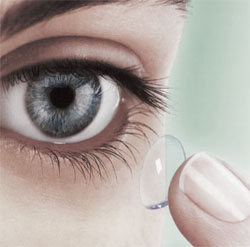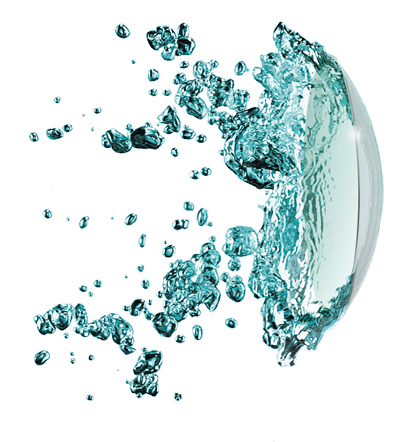
contact lenses provide many advantages and are a very successful form of vision correction. New manufacturing technology has also made contact lenses more affordable than ever before.
As more people discover the advantages of contact lenses, and with the persistence of the global need of vision care, the use of this form of vision correction is increasing around the world. There are now in excess of 100 million contact lens wearers globally, but with more than 1.45 billion myopic people in the world to cater for, the Brien Holden Vision Institute continues to strive for new innovations to treat eye conditions and making advances in the development of better contact lens products.
Contact lenses can now correct almost all eyesight problems including:
Even with the many recent advances in spectacle lens technology and the rising popularity of surgical interventions such as laser eye corrections, the use of contact lens remains a safe, effective and inexpensive way of achieving clear comfortable vision for many people.
Contact lenses offer various benefits over spectacle wear and refractive surgery. Compared to spectacles, contact lenses enable more ease of wear during sports and leisure activities by providing a wider field of view, less chance of dislodgement, less susceptibility to fogging, slipping off the face due to sweating, and dirt. Contact lenses also allow sunglasses and protective eyewear to be worn on top without any hassle.
In addition to the obvious benefits of offering natural peripheral vision and enhancement of appearance, in some cases, contact lenses may also offer better visual acuity. It has been found that optimal vision correction offered by contact lenses can improve performance in some elite athletes.
Breakthrough contact lens materials
Contact lens practice has come a long way since the prescribing of the very first contact lenses, made out of the non-oxygen permeable and rigid PMMA material, over forty years ago. The ongoing advances in technology have allowed contact lenses to be increasingly comfortable, more breathable, and able to be worn for longer periods of time with minimal complications of the eye.
Contact lenses are now soft and easy to adapt to. They come in frequent replacement and daily disposable modes of wear, which reduces the risk of infection and other adverse ocular events by minimising lens deposits, lens contamination, and general lens wear and tear.
The development of the silicone hydrogel material which is highly oxygen permeable (a breakthrough achievement of the Institute and its partners), allows lenses to be worn for long hours and still keep the eyes healthy and clear. If the lens cleaning regime is adhered to, lenses are being replaced as they should be and regular eye tests undertaken with an optometrist, contact lenses are a safe and convenient way of obtaining good vision.
The eye has certain requirements to maintain its health, comfort and clear vision.
Many contact lens wearers find they can only wear their contact lenses for a small number of hours per day.
This may be due to one or many of the following:
Silicone Hydrogel is the first choice of contact lens material in these situations to help reduce or eradicate these effects.
Silicone hydrogel contact lenses are advanced soft lenses that allow more oxygen to pass through the lens to the cornea than regular soft ("hydrogel") contacts. In fact, silicone hydrogel lenses enable up to five times more oxygen to reach the cornea than regular hydrogel lenses.
Silicone hydrogel and regular hydrogel lenses both are made of plastics that are hard when dry but readily absorb water and become soft and gel-like when hydrated.
If you've ever let a soft or silicone hydrogel lens dry out, you know that it becomes deformed, hard and fragile. But if you soak it for a few minutes in contact lens solution, it becomes soft and pliable again.

No.834, Between Khosh and Ghasroldasht St.,Azarbayejan Ave.,Tehran-Iran
Mail Us : m-hanjani@apadana.com
Phone
+98 21 668 94 649-50
Fax
+98 21 668 98 731
Exclusive dealers of
Aurolab
Zeiss
Ultravision
I-see vision
Avizor
Master-aid-deutschland